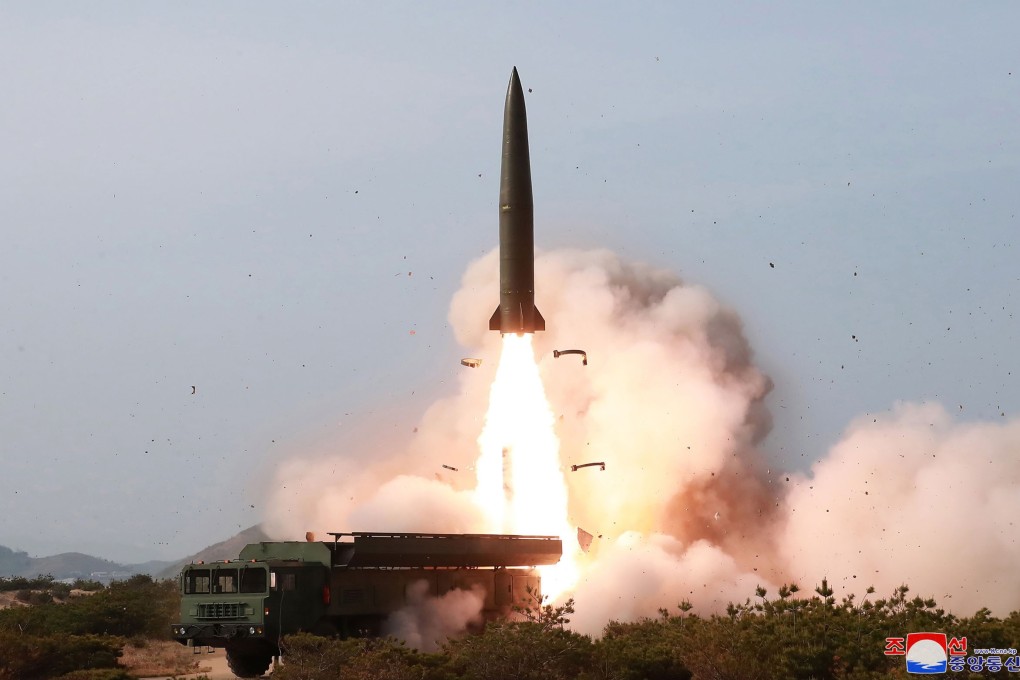North Korea weapons tests ‘a warning to Donald Trump’ to restart nuclear talks
- Kim Jong-un supervises launch of multiple guided weapons into Sea of Japan
- Kim is growing impatient at lack of progress on negotiations with US, analysts say

North Korea’s latest weapons tests are a warning to US President Donald Trump that Pyongyang is growing more impatient with the pace of nuclear disarmament talks and might restart long-range launches, analysts said.
North Korea’s military fired multiple tactical guided weapons into the Sea of Japan, or East Sea, in a “strike drill” supervised by leader Kim Jong-un on Saturday, Pyongyang’s Korean Central News Agency (KCNA) reported on Sunday.
The drill was designed to test the performance of “large-calibre long-range multiple rocket launchers and tactical guided weapons by defence units”, KCNA said.
The report came a day after the test firing, which analysts saw as an attempt to pressure Washington to give ground in talks to end the North’s nuclear programme after a failed summit in February.
Renmin University associate professor of international relations Cheng Xiaohe said the test was the latest sign of Pyongyang’s displeasure over the stalled nuclear talks with the United States.
“North Korea is frustrated with the US, in particular, so it tried to do something to press the US,” Cheng said. However, by limiting the tests to short-range missiles or rockets rather than the banned mid- or long-range ballistic missiles, Kim was signalling that “Pyongyang still wants to talk with the US”.
Jilin University international politics professor Wang Sheng said Kim might have launched the tests because he did not get the US reaction that he had hoped for from his meeting with Russian President Vladimir Putin in Vladivostok late last month.